My doctoral work centers around the implications of scale within the field of open education. Edwards (2015) suggested that “the task for educational researchers becomes one of engaging in a struggle over the specific approaches to open-closed-ness rather than pursuing openness per se as a worthwhile educational goal” (p. 255).
Why then should we not take a similar approach with respect to scale?
I see my research task as one of engaging in a similar struggle over the specific approaches to small-big-ness rather than pursuing scale per se. This post introduces the topic and my proposed research using the slides from my candidacy exam.
About me
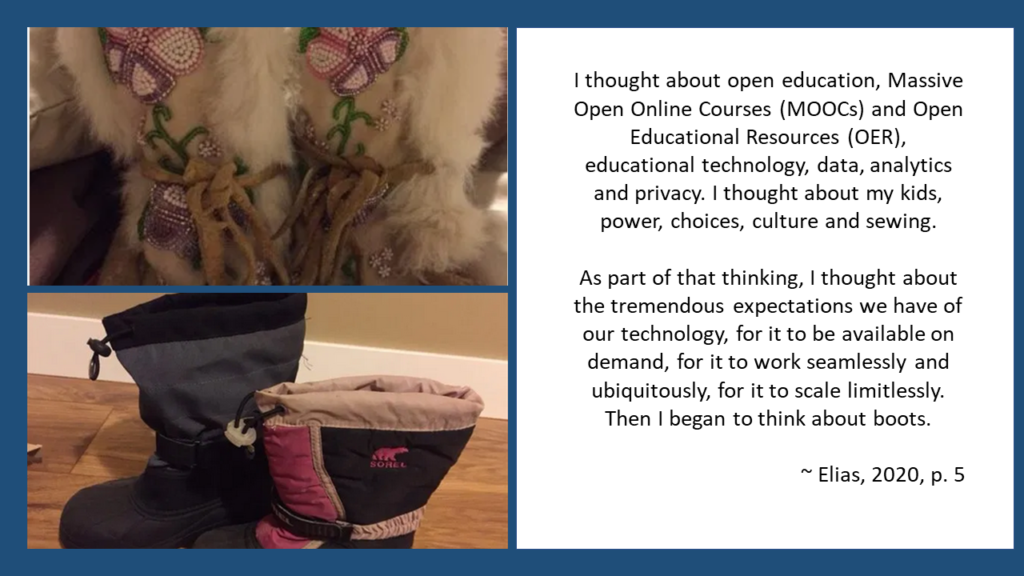
These are the boots and kamiks that first got me thinking about the implications of scale within open education that I wrote about several years ago.
I return to the stark contrast between store-bought boots and kamiks over and over again. What did I gain, what did my kids gain, because my mother-in-law, and her mother-in-law before her, chose not to put down their sewing needles in favour of mass-produced boots?
Many educators and technologists quietly continue work at a small and non-commercial scale. They offer alternatives that are culturally, financially and structurally different to the mass-produced commercial options. They are also, however, often rejected as too small, too hard to learn or too labour intensive. What do we gain when we adopt large-scale approaches to open education? What might we lose?
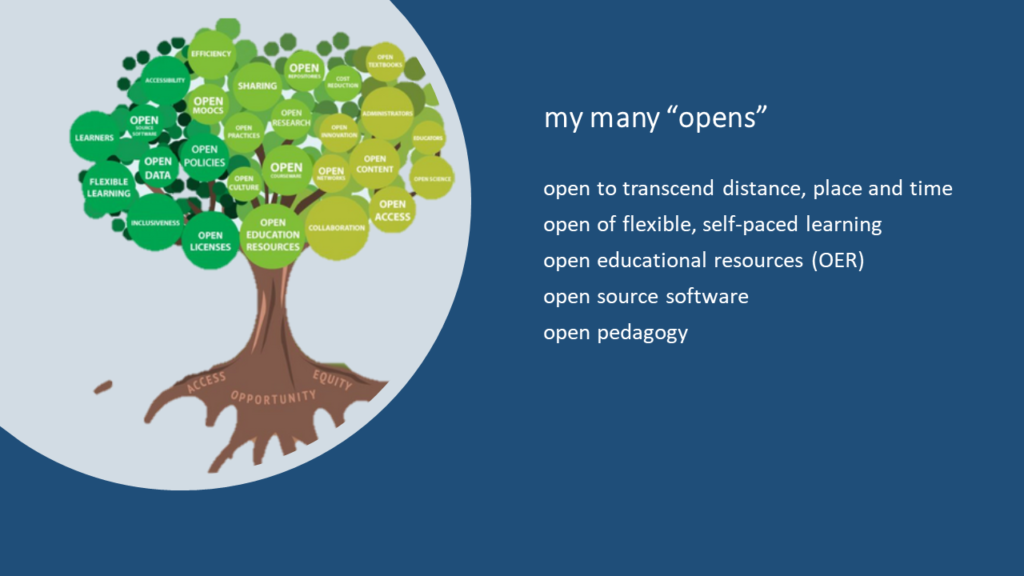
The meaning of “open education” has shifted over time and continues to lack a consistent definition (Stracke, Downes, Conole, Burgos, & Nascimbeni, 2019). Over the past 25 years, I have experienced the shifting meaning of open education first-hand. Despite the often-cited connection between the beginnings of open education and the advent of the Internet, when I first enrolled as a student my studies were supported by older technologies including telephone, mail and print. Through my graduate work, I have studied open as a mechanism for accessibility, OER, open data, informal online learning spaces, open software and early open pedagogy. Because of these varied experiences, I think of “open” as a complex ecosystem of entangled ideas.
Current “situation” of open education
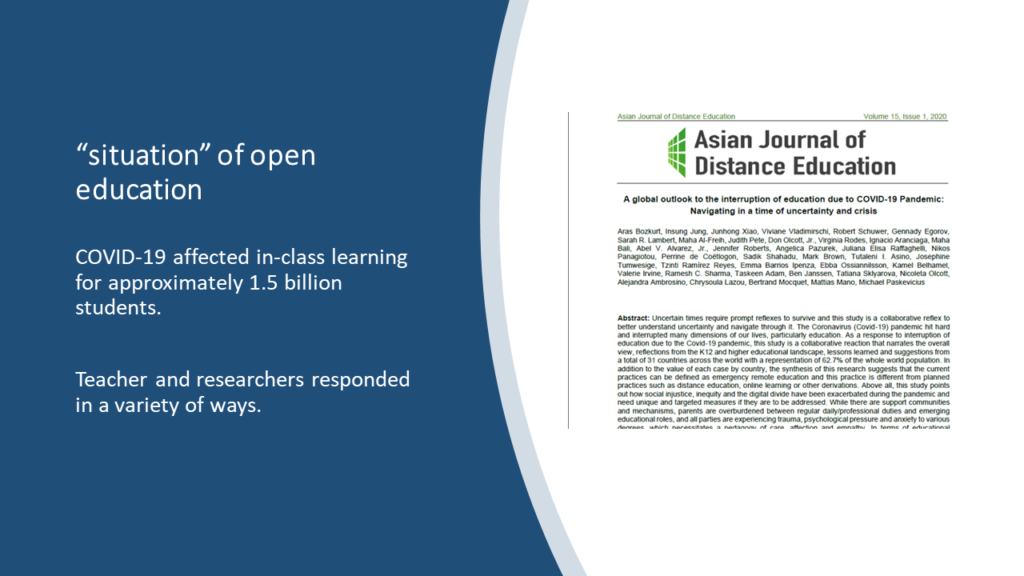
Since I wrote my proposal, COVID-19 has impacted approximately 1.5 billion students worldwide. Governments, educators and researchers have responded as discussed by Bozurt et al.

EdTech vendors have also responded in a variety of ways, some better than others, as explained in this post by Anne-Marie Scott.
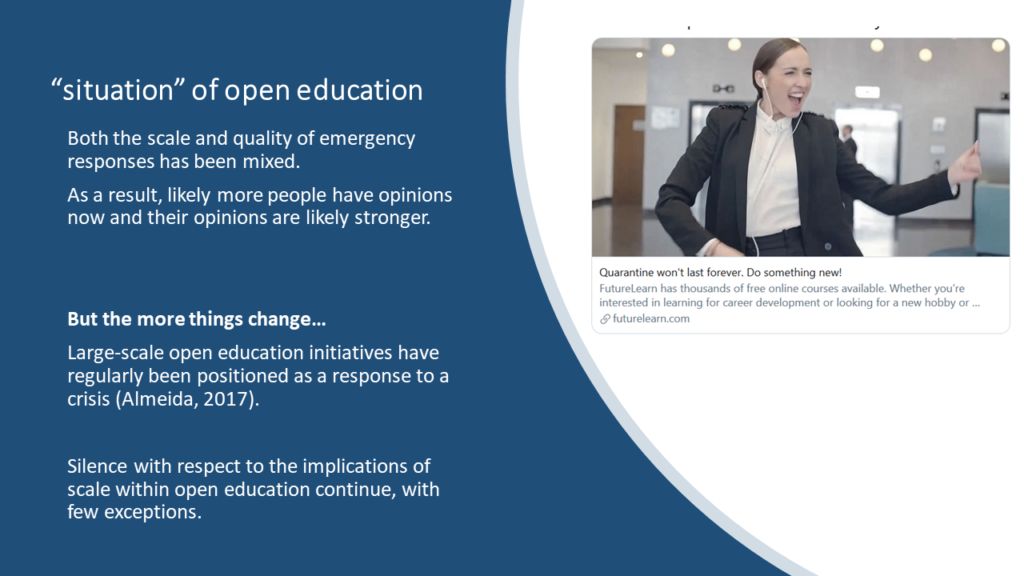
Yet the more things have changed, the more things have stayed the same. As noted by Almeida (2017), open education has always been positioned as a response to a crisis. In the above image, FutureLearn demonstrating MOOCs seeking to capitalize on the current crisis (I’m saving the critique of the imagery in ad for another day). There remains little critical analysis of the implications of scale within open education.
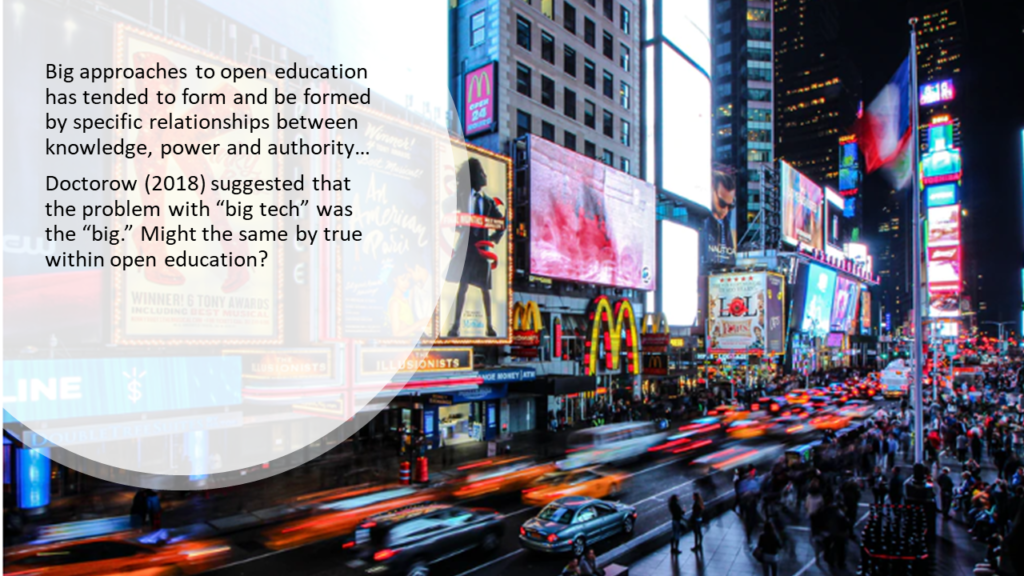
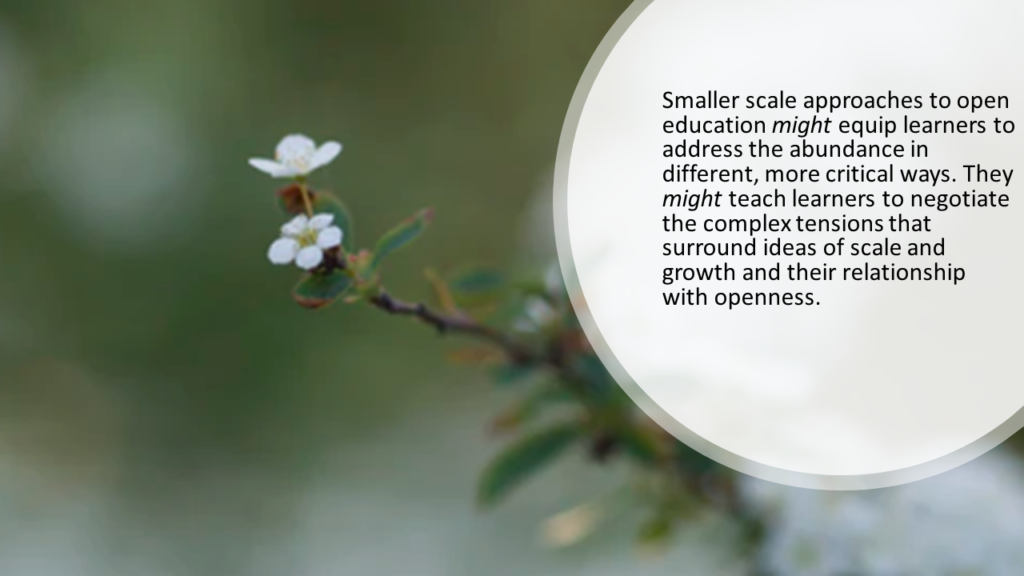
What are the implications of big and small within open education? This is the question that my research seeks to explore by engaging other open educators using situational analysis.
Why situational analysis?
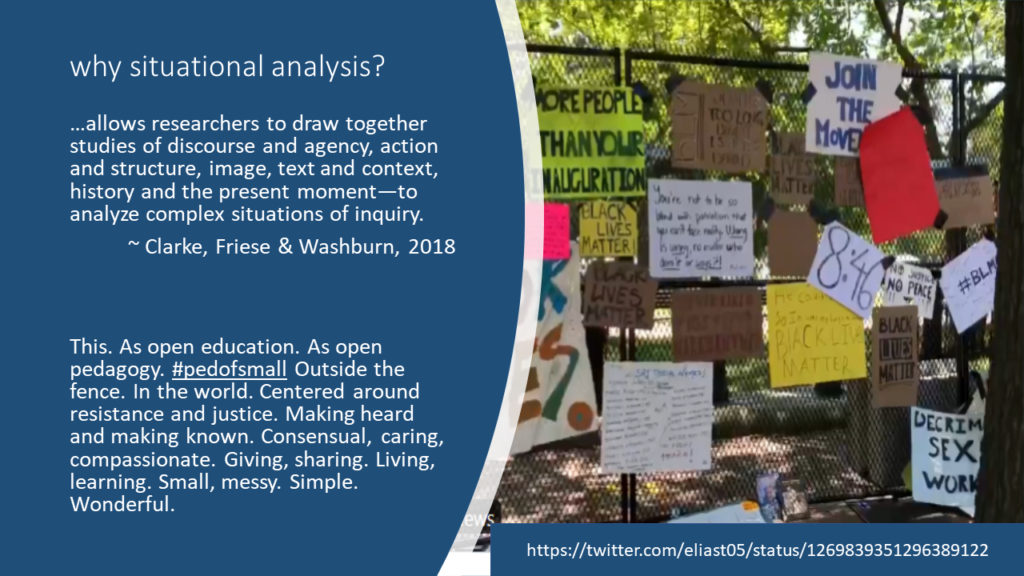
The “situation” of open education is complex. Situational analysis embraces the mess rather than seeing to simplify it.
I share the example of the fence outside the White House in Washington, D.C. as an example of open education because it emphasizes the importance of action and the scales at play ~ the big, authoritarian government reaction, and the small, participatory reactions of the protesters who left signs behind. It may be worth noting that the “tech” is this example is a fence, markers, paper and cardboard. To me, open education can be technologically very small (and non-digital).

Situational analysis is qualitative, tentative and critical. It seeks to learn from the past and the present. It is about asking hard questions about what “is” in order to, just maybe, create a better “will be.” It is important to continue to question ourselves and engage others to support accountability.
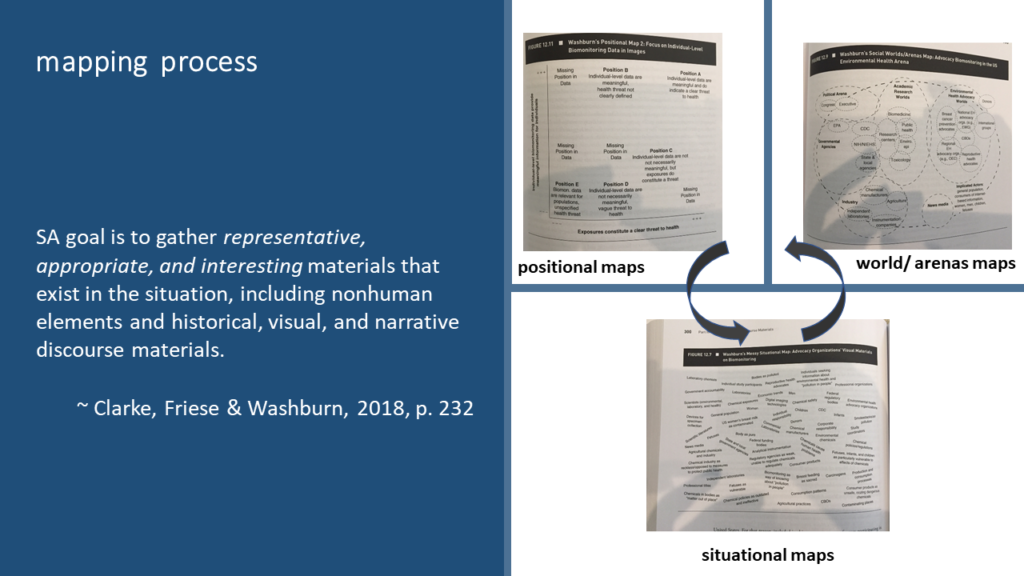
Situational analysis uses three different mapping processes, to better understands the situation, the relationships between those involved and the positions taken with respect to relevant topics.
My research study
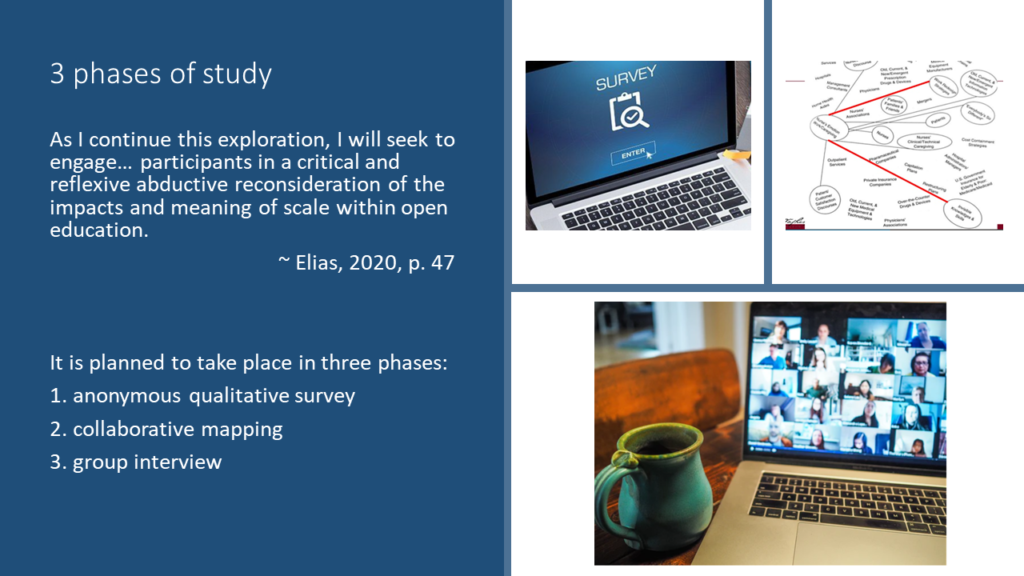
My study is planned to have three phases, each of which is described in more in the following slides. It is important to me that I engage with others as much as possible throughout the research process, given that as a doctoral dissertation it must be the work of me as a single author.
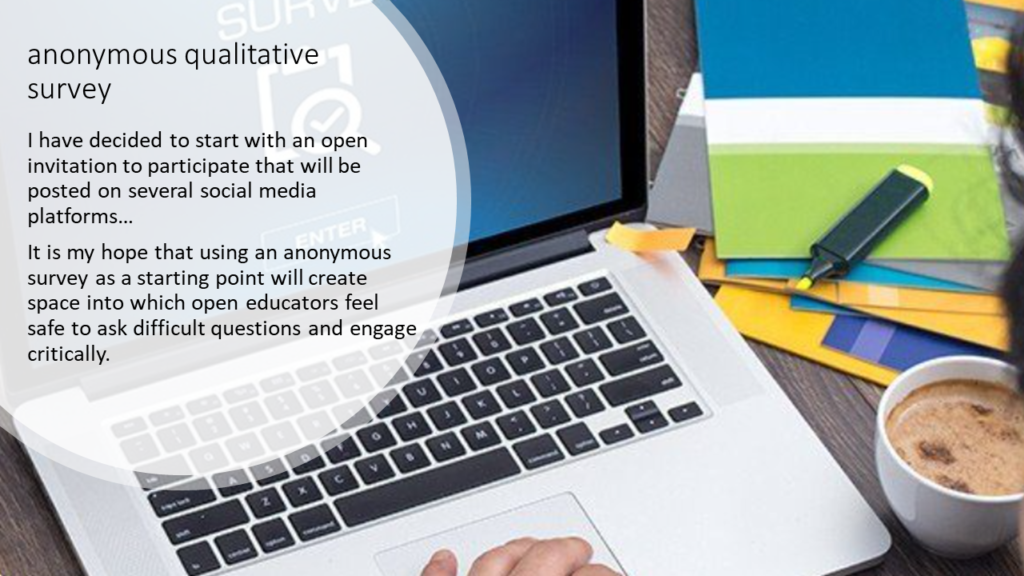
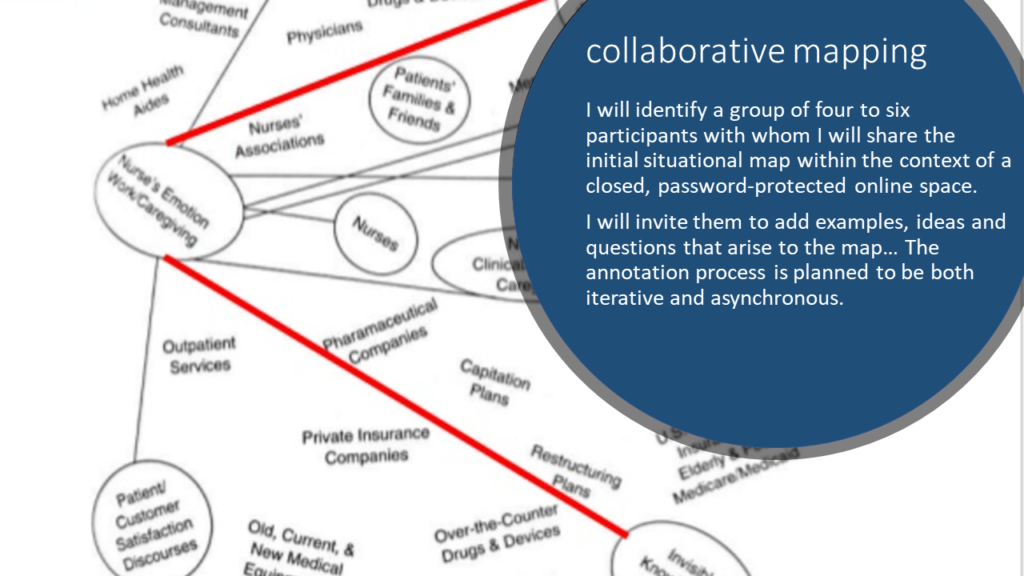
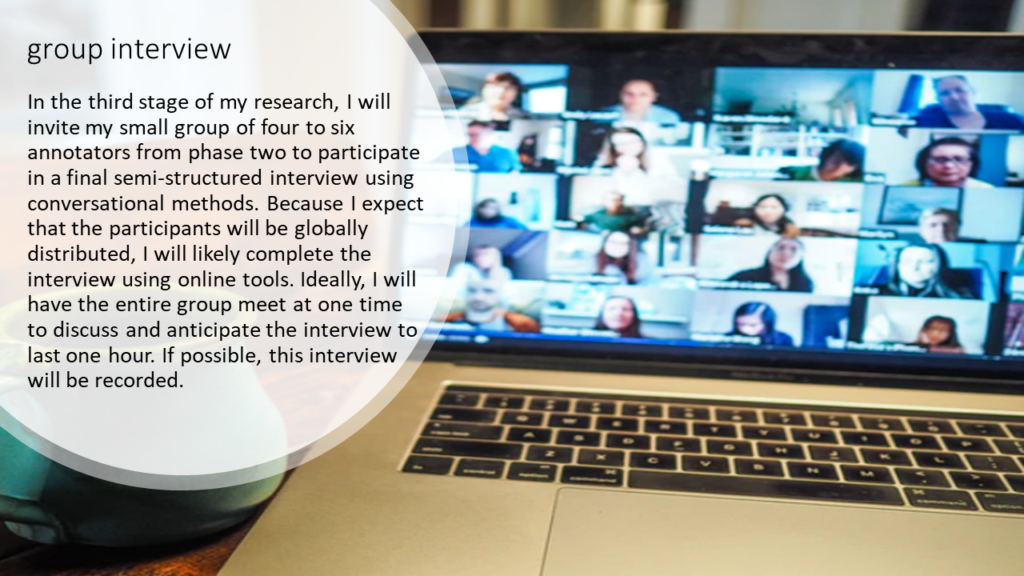
I’m hopeful that through this process, I will gain insight into the implications of scale as perceived by open educators.
If all goes well, my next post I’ll be able to share more information about how to get involved in the first phase of my research.
References
Almeida, N. (2017). Open educational resources and rhetorical paradox in the neoliberal univers(ity). Retrieved from https://academicworks.cuny.edu/cgi/viewcontent.cgi?referer=https://scholar.google.ca/&httpsredir=1&article=1143&context=ny_pubs
Brown, A. M. (n.d.) adrienne maree brown [web log post] retrieved from http://adriennemareebrown.net/
Clarke, A.E., Friese, C. & Washburn, R. S. (2018). Situational analysis: Grounded theory after the interpretive turn. Thousand Oaks, CA: Sage.
Doctorow, C. (2018, August). Big Tech’s Problem is Big Not Tech. Keynote presented at the Decentralized Web Summit 2018 [Video file]. Retrieved from: https://archive.org/details/decentralizedwebsummitmedia-2018-courtyard-2?start=475
Edwards, R. (2015). Learning, Media and Technology Knowledge infrastructures and the inscrutability of openness in education. https://doi.org/10.1080/17439884.2015.1006131
Stracke, C. M., Downes, S., Conole, G., Burgos, D., & Nascimbeni, F. (2019). Are MOOCs open educational resources?: A literature review on history, definitions and typologies of OER and MOOCs. Open Praxis, 11(4), 331.
Thien, M. (2016). Do not say we have nothing. Penguin Random House Knopf Canada.
